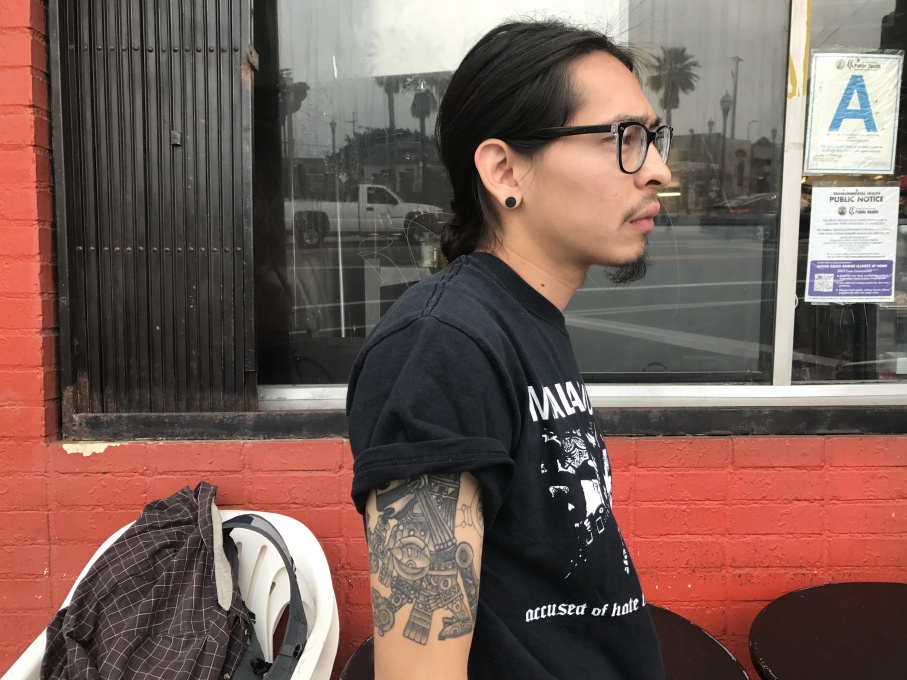Activists are fighting back against the “artwashing” gentrification of Los Angeles’ Boyle Heights neighborhood

“The ‘Artwashing’ of America: The Battle for the Soul of Los Angeles Against Gentrification,” published in Newsweek, is another chronicle of the plight of Boyle Heights, Downtown LA’s Arts District, and all other neighborhoods across America that are vulnerable to gentrification. It follows several activists and artists in Boyle Heights and portrays the narrative of how tensions arose between them.
The article focuses on the historical events that have marked Los Angeles and the philosophy, urgency, and emotions that fuel anti-gentrification activism. One source of historical trauma for the neighborhood that the article locates is the development of Dodger’s Stadium and the Battle of Chavez Ravine that took place in 1950s and ended with the dislocation of the Latino community that had been living there.
From there it unwinds the narrative of Boyle Heights and its rise into its precarious pre-gentrification stage today:
“Until recently, Boyle Heights was the opposite of hip. Known as the Ellis Island of the West Coast, it promised refuge to newcomers to Los Angeles who were prevented by housing covenants from living elsewhere. You can still see the remnants of the Jewish settlement in the Breed Street Shul, which opened in 1923. The nursing home on South Fickett Street was once the Japanese hospital. There is a Serbian cemetery, long populated by a brood of “mystery chickens” that inexplicably appeared some years ago on the graveyard’s grounds and have themselves become beloved locals. The sign for Jim’s restaurant is a classic of mid-century design that improbably promises both tacos and pastrami.
“Mexican-Americans started coming to Boyle Heights after World War II, as American cities headed into a decline hastened by the rise of the suburb. Freeways cut up the neighborhood, which in 1961 became home to the inhuman concrete tangle known as the East L.A. Interchange. Boyle Heights also proved a crucible of gang violence, which was practically invented in Los Angeles; in 1992, there were 97 homicides attributed to the Hollenbeck Division, the local station of the Los Angeles Police Department. “Gang members were part of the scenery, like the shrubs finely coated by the freeway emissions from the nearby East L.A. interchange,” Hector Becerra wrote in a recent recollection of growing up in Boyle Heights during the 1980s for the Los Angeles Times.
“Somehow, Boyle Heights held together. Last year, Hollenbeck Station recorded only 14 murders. A line of the Metro light rail system now connects it to both downtown and the San Gabriel Valley. In 2005, Los Angeles elected a Boyle Heights native as its first Latino mayor, Antonio Villaraigosa. Today, there are new restaurants, coffee shops and galleries, many of them run by locals who want to keep the neighborhood’s Chicano heritage alive. That imperative has been called gentefication (gentrification tempered by la gente, Spanish for “the people”), which suggests an organic improvement of a neighborhood by its Spanish-speaking entrepreneurs. For example, at the Primera Taza coffee shop, a café Americano is known as a café Chicano.
It was inevitable that art galleries would ford the Los Angeles River into Boyle Heights. The Arts District, a formerly decrepit section of downtown, has been growing more expensive; Annenberg Media found that rents rose 140 percent in parts of the neighborhood in the first 14 years of the new millennium. Between 2000 and 2012, rents in all of Los Angeles County also rose, but at the much slower rate of 25 percent.
“In the three years since that study, new developments like the gigantic One Santa Fe residential-commercial complex have only made the neighborhood more attractive—and more expensive. Michael Maltzan, who designed the sinuous white slabs of One Santa Fe, is also working on the Sixth Street Viaduct, a $480 million span across the Los Angeles River that will also include much-needed parkland. That bridge will connect downtown directly to Boyle Heights. And though it isn’t slated to open until 2020, plenty of Arts District refugees have already crossed the river.”
To read the full article, click here or the link at the bottom of the page.
Although plagued with a condescending tone that often describes the protesters as philosophically confused and morally vindictive, “The ‘Artwashing’ of America” is a rationalist’s look at the matter of Boyle Heights and gentrification, and in that rationalism, it attempts to locate and resolve how Boyle Heights has erupted from an utterly typical case of gentrification to this utterly unique state of resistance.